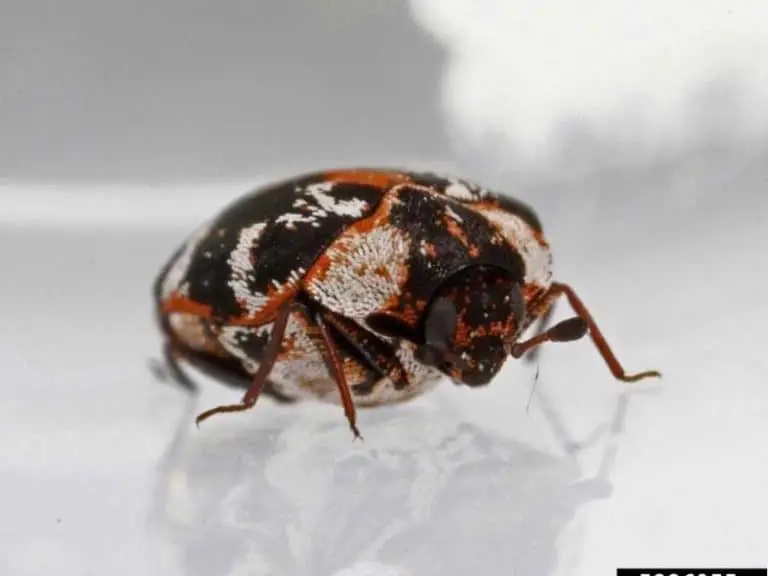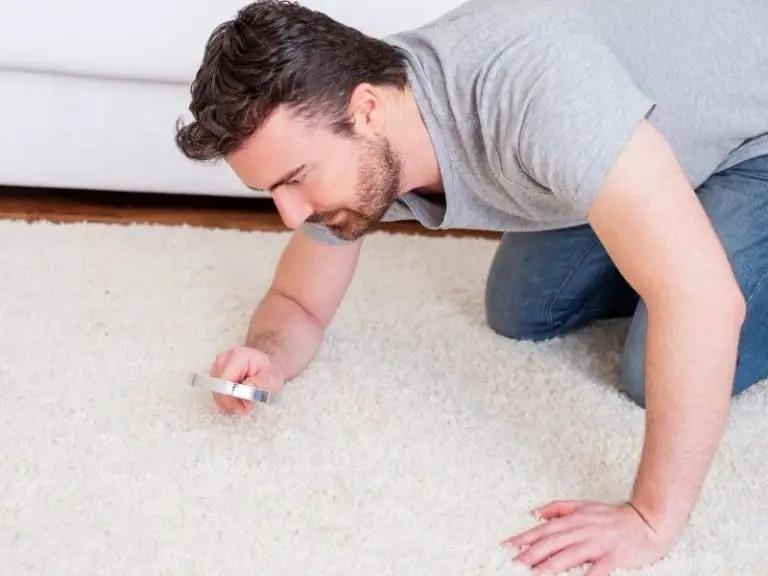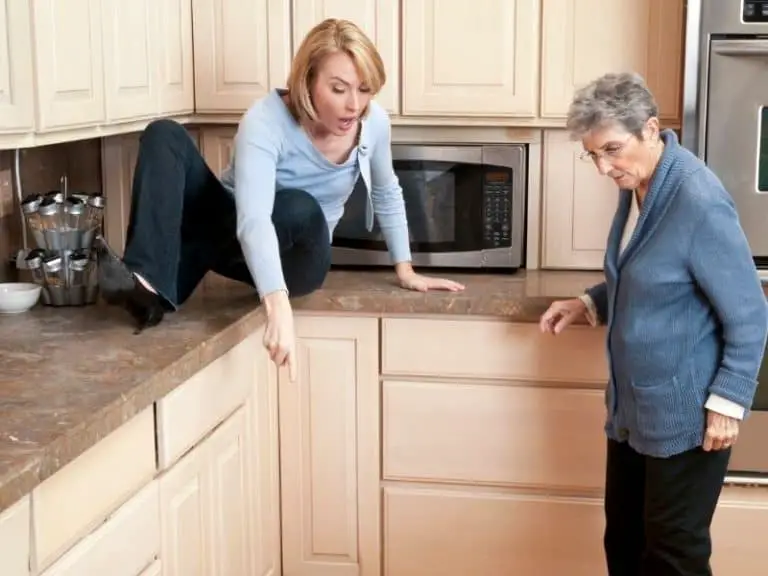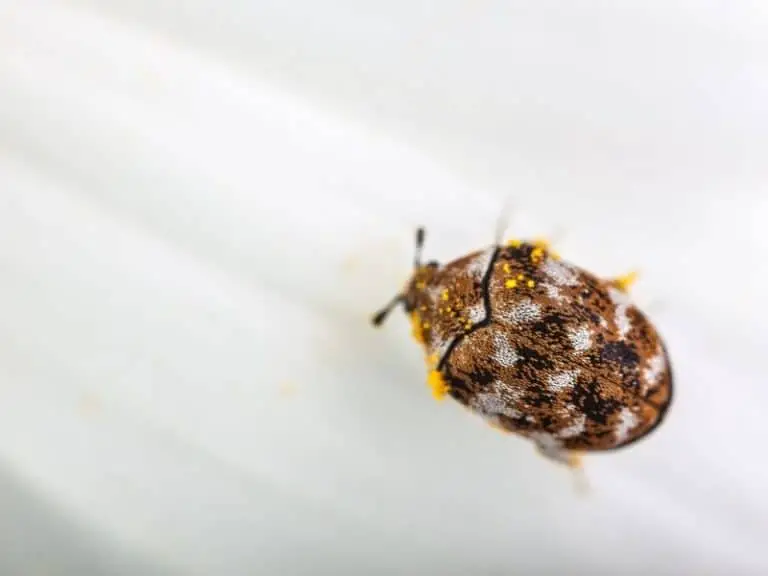How to Get Rid of Carpet Bugs With These 8 Steps
Carpet bugs, also known as carpet beetles, can damage your belongings. In some instances, they can also harm the health. This is why an infestation consisting of these critters need to be dealt with right away. Besides contacting professional exterminators, you can also get rid of them on your own in various ways.
To get rid of carpet bugs, start by vacuuming and steam cleaning infested areas and surfaces. Wash in hot water washable items, and apply vinegar or boric acid on non-washables. You may use carpet beetle traps and insecticides. In case of severe infestation, contact the pros.
There are many common household pests that can invade your home. Some of the most destructive ones are carpet beetles, which some people refer to as “carpet bugs.”
Fortunately, they are easier to get rid of through the DIY approach compared to other pests, including most especially bed bugs. Read on to know why and how you can eliminate carpet beetles with just a few simple steps!
Getting to Know the Enemy More
When people say that they have a carpet beetle infestation, what they really mean is that larvae carpet beetles are ravaging their homes.
Larvae carpet beetles are less likely to survive outdoors because it is indoors where they can have easy access to their favorite treats. They are natural fibers, animal products, and pantry foods.
On the other hand, adult carpet beetles have plenty of pollen and nectar to consume outdoors, and this is why they do not need to infest homes.
However, they do like laying their eggs indoors to make sure that their babies will have lots of food to enjoy once they hatch from their eggs.
So, in other words, larvae carpet beetles are the real enemies, not the adults. They are the ones that can leave holes in your clothes, bald spots in your carpet, gnaw marks on leather bags and shoes, tears in upholstered furniture, and damage to food and their packaging.
Worry not because larvae carpet bugs are not interested in drinking your blood, unlike bed bugs, mosquitoes, and other pesky creatures.
However, they do like your hair — not just the hair on your head but also elsewhere on your body. Oh, and they love nibbling on the fur of pets, too.
Although they don’t bite humans, they can leave bite mark-like impressions on your skin. Those are not really bites.
Rather, those are the signs and symptoms of an allergic reaction of the skin to the hairs covering the bodies of larvae carpet beetles.
Some people simply end up with red, itchy bumps that sometimes feel like they are burning. Others with severe allergic reactions may end up experiencing eye irritation, digestive issues, and breathing difficulties.
Luckily, finding where larvae carpet beetles are in your home is not that tricky. Always keep in mind that they like staying where there’s easy access to food.
They also love to hide in dark places where they can get peace and quiet while taking a trip to dreamland in between meals.
It was mentioned earlier that it is easier to deal with carpet bugs or carpet beetles compared to bed bugs and many other common household pests. Don’t stop reading now to find out why!
A Hundred or Less Critters
Certainly, a carpet beetle infestation does not appear out of thin air.
It has to start somewhere, such as introducing into your home a secondhand piece of upholstered furniture that has a lot of carpet beetle eggs attached to it, or with many larvae carpet beetles hiding in its cracks and crevices.
However, most of the time, an infestation starts with a pregnant female adult carpet beetle getting inside the home through an open window or door or any other opening such as a crack, hole, or vent.
One female adult carpet beetle can lay 35 to 100 eggs at once. It usually lays them in different areas in batches.
So, in other words, provided that only one pregnant female adult carpet beetle ends up indoors, the resulting infestation is likely to consist of no more than 100 larvae carpet beetles.
The minute that larvae carpet beetles become adults, they fly back outdoors because their new diet no longer makes it viable for them to live indoors.
Other common household pests, such as bed bugs, infest homes no matter which life cycle they are in.
Since adult bed bugs do not have to migrate outdoors to feed and mate, such as in the case of adult carpet beetles, the number of bed bugs can keep growing and growing as they mate.
The constantly booming population can make it difficult for bed bugs to be eliminated via the DIY route. This is especially true if the solutions are carried out improperly or inconsistently.
8 Steps to Eliminate Carpet Bugs
Just because you are sure that there are larvae carpet beetles inside your home doesn’t necessarily mean that you should immediately get in touch with professional exterminators and leave the job to them.
Well, you could contact them if you could pull $100 to $300 out of your pocket without trouble.
But if you are on a tight budget and you are into DIY projects, too, then you could try putting the problem under control with some home remedies.
There are many steps that you may take. Below, you will come across some of those that are proven effective for getting rid of carpet bugs. Here they are.
Vacuum Clean
Picking up larvae carpet beetles with your bare hands is a complete no-no. This is especially true if you tend to end up with allergy-like signs and symptoms upon coming into contact with those fuzzy creatures.
The best way to collect live carpet bugs as well as suck them (and the eggs, too) out of their hiding places is by arming yourself with a vacuum cleaner.
Something with a disposable dust bag is the right one for the job as it can simplify the process of disposing of the collected larvae carpet beetles and carpet beetle eggs.
Also, avoid using a nozzle attachment with a brush. This can risk you scattering larvae carpet beetles all over the place, thus allowing them to survive your DIY extermination.
You can use a vacuum cleaner alone or a few hours after sprinkling boric acid in infested surfaces, cracks, and crevices — we will talk more about boric acid in a few, so hang around!
Steam Clean
Just like many common household pests, carpet bugs cannot tolerate high temperatures. This is why one of the best ways to eliminate them from your home is by arming yourself with a steam cleaner.
Larvae carpet beetles die when exposed to temperatures of at least 120°F.
These days, steam cleaners are capable of producing steam with temperatures of 150°F to 300°F. This means that practically any steam cleaner in the market that you buy can be a valuable tool in your quest to rid your life of carpet beetles.
However, it is a good idea to get your hands on a high-quality steam cleaner.
This is especially true if you live where there is always a risk for a carpet beetle infestation (yes, some places on the planet are more prone to a carpet bug invasion) or you intend to use the product for various purposes.
Just a quick tip: When using a steam cleaner, dial down the pressure to the lowest setting possible.
High pressure can blow away larvae carpet beetles, thus giving them the opportunity to flee and hide elsewhere. When using a steam cleaner to get rid of an infestation, the temperature is more important than pressure.
Wash Items in Hot Water
Clothes out of natural fibers are some of the most delectable treats for larvae carpet beetles.
While you can steam clean them, it can take a lot of time and energy to kill every bed bug feasting on your clothes using a handheld device. This is especially true if you have cabinets and closets full of clothes.
It’s a good thing that there is an alternative to steam cleaning. And it’s none other than washing your clothes in hot water for at least 30 minutes.
Just like steam cleaning, washing items in hot water exposes carpet bugs to high temperatures. Hot water is defined as water that’s 130°F or higher.
Something that’s between 90°F and 110°F is considered warm water, and it won’t kill carpet beetles. Again, they should be exposed to at least 120°F for them to die.
Unfortunately, many of the clothes that larvae carpet beetles tend to munch on cannot be washed in hot water. Some examples of them are those that are completely made from or contain wool and cotton. Items out of silk should not be washed in hot water, too.
Fortunately, there are many other ways to deal with carpet bugs aside from washing launderable items in hot water.
Spray Diluted Vinegar
Steam and hot water that’s 120°F and higher can annihilate carpet bugs on contact. If you don’t have the budget to buy a steam cleaner or the time to wash infested items in hot water, there is something that you may count on to kill carpet beetles instantly.
There is no need to step foot outside your home to buy it. That’s because it is very much likely that you already have it in your kitchen. This home remedy for carpet bugs is none other than vinegar.
Vinegar works because of its acidity that those hairy crawlers cannot stand. All you have to do is spray it on live carpet beetles to get rid of them.
You may also spray vinegar on carpet beetle eggs to destroy them before they have the opportunity to hatch and introduce larvae carpet beetles into your home.
It is a good idea to use undiluted vinegar if the carpet beetle infestation is massive. But if the problem is mild to moderate only, you may dilute vinegar to make your stash of it go a long way.
Refrain from diluting vinegar with a lot of water. Otherwise, it will lose much of its acidity, thus making it harmless to carpet bugs.
Dilute one part of vinegar with no more than two parts of the water. By the way, it is completely up to you if you will use white vinegar or apple cider vinegar. They may have different purposes, but they have pretty much the same acidity.
Try Essential Oils
Are you hesitant to use vinegar as an all-natural remedy for carpet bugs because of the way it smells?
Fortunately, you don’t have to stick with vinegar to enjoy instant results. There are many alternatives to this sour-smelling and sour-tasting liquid.
They are essential oils whose smells can have therapeutic effects, which is why they are heavily employed for aromatherapy, a form of holistic healing that uses all kinds of aromatic materials.
When it comes to essential oils as 100% natural tips on how to get rid of carpet bugs, you have a handful of choices.
However, there are two that are revered for their ability to kill carpet bugs on contact. They’re none other than peppermint essential oil and clove essential oil.
It’s no secret that peppermint essential oil is a common ingredient in a lot of oral care products like toothpaste and mouthwash.
Brushing your teeth with toothpaste or rinsing your mouth with a mouthwash containing peppermint can make your breath smell fresh.
On the other hand, peppermint essential oil can make larvae carpet beetles breathe their last!
Clove essential oil, on the other hand, is a common ingredient in an assortment of topical analgesics because of the fact that it can alleviate both pain and inflammation.
When used as a remedy for carpet beetles, it can provide you with relief from an infestation quickly.
Because essential oils are not cheap, you may dilute them with distilled water beforehand. However, refrain from adding a lot of distilled water to keep them from losing their potency.
Apply Boric Acid
Other than vinegar and essential oils, you may also count on boric acid if you no longer want to be seen wearing clothes with holes and using leather belts and shoes with gnaw marks.
Boric acid comes with pros and cons. It’s important to know them to have an idea if you should use it to get rid of carpet bugs or go with another DIY solution.
When exterminating larvae carpet beetles, you can use boric acid in a couple of ways.
First, you can sprinkle it around food sources, in hiding places, and on crawling areas. This allows boric acid to carry out its two jobs.
They are to poison those pests when ingested and to dehydrate them when it comes into contact with their exoskeletons. It’s important that you leave boric acid in place for at least two hours before vacuuming it.
Second, you can spray boric acid. To do this, dissolve it first in hot water. The recipe is to stir a teaspoon of boric acid in two cups of hot water until it dissolves. Once cool, transfer the mixture into a spray bottle and spray where necessary.
While boric acid is completely natural, its use as an insecticide comes with a few downsides.
For instance, it can cause skin, eye, and airway irritation. While generally safe for adults, boric acid is dangerous for kids.
This is especially true if large amounts of it are ingested. The product is also bad for pets.
Use Traps and Insecticides
Online and offline, you can easily come across traps and insecticides that can help you in your quest to get rid of those carpet beetles. Before you shop for them, it’s important that you have an idea of their respective advantages and disadvantages.
Traps for carpet bugs are also effective for many other common household pets, crawling and flying alike.
They work as they have glue pads that catch insects that crawl or fly through them unsuspectingly. Some traps have baits such as pheromone attractants and yummy scents like peanut butter and chocolate.
Most traps are free of insecticides and other toxins. Unfortunately, they work passively. This means that you will have to wait for larvae carpet beetles to crawl through them to see results.
Insecticides for carpet beetles contain all sorts of ingredients. Some examples include boric acid,
bifenthrin, cyfluthrin, and pyriproxyfen. Some insecticides have one active ingredient, while others have a combination of two or more.
What’s really great about insecticides is that they can kill larvae carpet beetles and destroy carpet beetle eggs on contact. Sadly, many of them can pose some health risks if inhaled or ingested.
Just a word of advice: Use pesticides with caution and according to the directions on the packaging.
Switch to Synthetics
Making your home less friendly to larvae carpet beetles can help make it easier to get rid of them. It also helps fend off a reinfestation in the future.
Because carpet bugs thrive by consuming items that are out of natural fibers and contain animal products, you should considerably limit them in your home.
Switching to clothes, carpets, rugs, drapes, and others out of synthetic materials can deprive those critters of the opportunity to feed.
It’s also a must that you make your pantry carpet beetle-proof. You can do this by storing pantry items in glass or heavy-duty plastic containers, preferably those with an airtight seal.
Keeping your home clean and clutter-free is also great for keeping carpet beetles at bay.
Just Before You Try to Get Rid of Carpet Bugs
Carpet bugs or carpet beetles can damage a lot of your belongings, particularly those that are out of natural fibers and contain animal products.
They can also wreak havoc on your pantry as they love some of your foods, too, such as flour, bread, crackers, spices, seeds, and dried fruits. What’s more, they can leave you scratching all over.
It’s because of these reasons why it is a good idea to spring into action as soon as you confirm that you are sharing your home with larvae carpet beetles.
Getting rid of them through the DIY approach is possible. Above, some of the best home remedies for carpet beetles were mentioned. Carry them out correctly and consistently, and you may soon resume enjoying an infestation-free life.
But if it seems like you are not getting the desired results after carefully following the how to get rid of carpet bugs tips stated above, consider setting up an appointment with a reliable professional exterminator in your area.
Pro-tip: One of the easiest ways to get rid of carpet bugs is by using traps. Check my post on the best carpet bug traps (pesticide-free).
Photo Credit: Joseph Berger, Bugwood.org
Medical Disclaimer: TheHomePestControl is a digital publisher and does not offer personal health or medical advice. The contents of this website are not intended to substitute for professional medical advice, diagnosis, or treatment.
Affiliate Disclaimer: As an Amazon Associate, I earn from qualifying purchases made on our website. If you make a purchase through links from this website, I may earn a commission at no additional cost to you.






